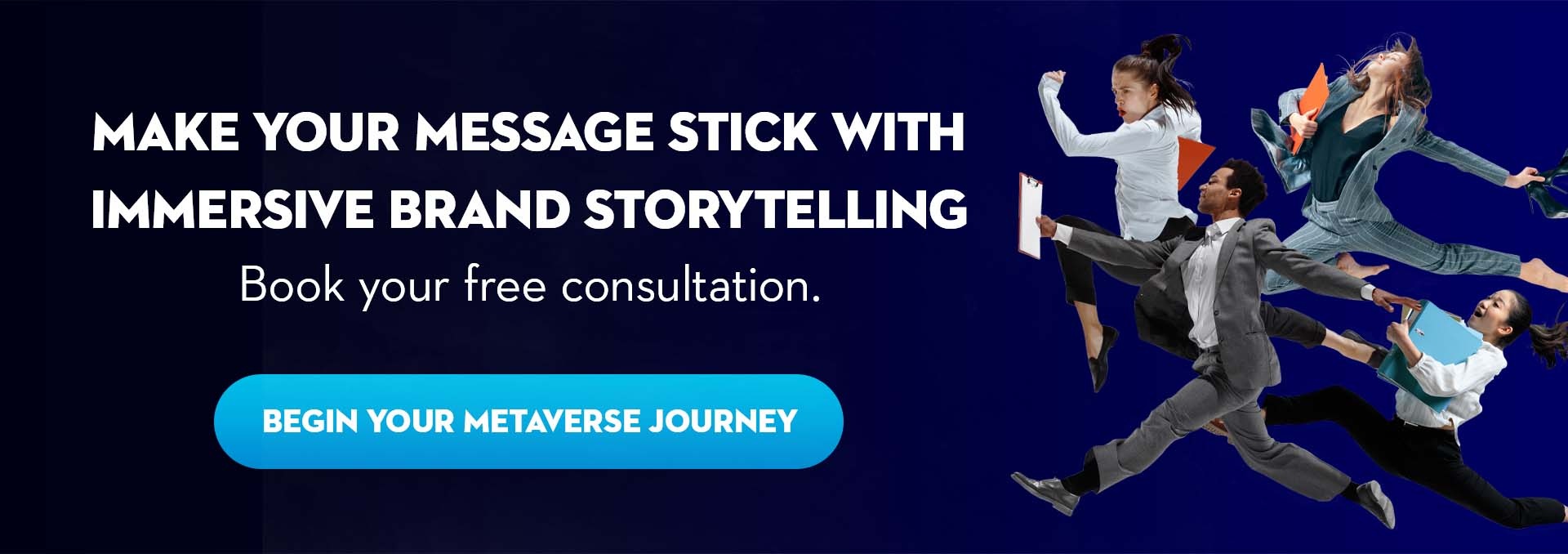The goal of marketing is to answer the need or question for a customer. With more and more people spending more and more time in digital environments and mobile devices, marketing has to follow.
Marketing has digitalized drastically in the past few years, and marketing efforts are faster, cheaper, and easier to target. Digitalization has also made marketing come to a point where people see thousands of ads and messages every day. Only a handful of them is heard.
The eternal question is: how to stand out from the mass? Some might say, with compelling storytelling. They are not wrong. But how to differentiate your story from the millions of others?
Spatial computing is doing for digital marketing what banner ads did for traditional marketing
 Technology has led us to a situation where computers now understand the concept of space. This evolution calls for marketers to re-think their channels and platforms, and even the forms of their ads.
Technology has led us to a situation where computers now understand the concept of space. This evolution calls for marketers to re-think their channels and platforms, and even the forms of their ads.
The shift from 2D to 3D is the next step all today's marketers are facing. Or at least if they want to stay on the race of getting their message through. Sure, traditional digital marketing concepts aren't going anywhere as long as we are using the internet. Still, surely we will reach a point where the presumption is the consumer can find answers to their questions right where they stand. That's where augmented reality (AR) comes in handy.
If you're new to AR, here's a quick recap: augmented reality is a digital layer of content placed to the physical world. You can observe the AR content through an AR device (AR glasses, smartphone, or computer). Read our augmented reality for beginners post from here.
AR is offering new ways for all marketers to reach, engage, and understand their audience. With AR content, you'll allow your customers to see the benefits of your product or service in their world. Instead of telling how your sneakers are better than the competing ones, you can show it.
Also, AR being a relatively new concept for the masses, it still has a novelty aspect. Your audience is likely to have a high interest in an AR campaign. If this isn't the time to get into AR, what is?
Time spent on AR content is 20 times higher than in other forms of advertising
Augmented reality's number one advantage is the emotional connection. Your ads and marketing messages will feel more personal to your audience when experiencing them firsthand and interacting with them.
 AR content gives a sense of playing a video game, leading to a positive association with the product and the company. AR is the tool that might not show immediate results, although it might generate more traffic instantly, but is terrific for building a brand. AR content is something you can use, with slight moderations, multiple times in different campaigns and contexts, and it never grows old.
AR content gives a sense of playing a video game, leading to a positive association with the product and the company. AR is the tool that might not show immediate results, although it might generate more traffic instantly, but is terrific for building a brand. AR content is something you can use, with slight moderations, multiple times in different campaigns and contexts, and it never grows old.
Depending on your goals, you can achieve great results out of your AR marketing efforts. Arilyn's analytics show that a user spends up to 1-2 minutes with AR content. The visibility for a Facebook post is 1.7 seconds. AR content is hooking, and a user returns to an AR experience up to 20 times. The CTR to purchase can be as high as 33%. We are not promising all of these results in one campaign. You need to focus and pick one.
When planning your AR campaign and setting your goals, it's crucial to determine what you want to achieve. Do you have a concept or goal in mind, but you're not quite sure how to get there? Or is there even a way to do what you want? We at Arilyn offer free consultation to get you started. Just hit us up and we'll help you set your goals and start your way into AR stardom!
AR marketing narrows down the gaps between the steps of the purchasing funnel
As AR is the medium that hooks your audience, the gaps between purchasing funnel steps are narrowed. With a single AR ad, you can evoke interest, turn that into consideration, and finally resulting in a purchase.
A fantastic example of this is the AR try-on: you add a text on a traditional display ad saying, "Tap to try on." Tapping the ad takes the customer to a WebAR page, in which an AR filter is enabled. The customer tries your product on, loves it, and clicks a purchasing button.
All steps of the purchasing funnel happen in a single and short flow. You and your customer will save time and effort, leaving you both content and satisfied.
AR makes the purchasing decision easier. When your customer can see the product beforehand and try it on at their own pace and space, they'll feel more comfortable and confident about their decision. Try-before-buy reduces the chance of returning the product.

When you want your marketing efforts to stay effective, you need to follow your audience. With technology evolving rapidly and new tools for consumers to navigate through their lives emerging, make sure to stay on top of mind and give people what they want: experiences.
How to create memorable brand experiences with AR marketing?
Read more about what is augmented reality.


